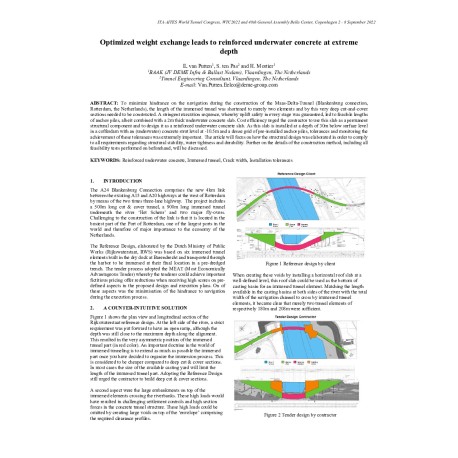Cart
0
0
No document
0,00 €
Total
Document successfully added to your shopping cart
Quantity
Total
There are 0 items in your cart.
There is 1 item in your cart.
Total documents
Total shipping
To be determined
Total
Search & filter
Search for a publication
Search & filter
New


Optimized weight exchange leads to reinforced underwater concrete at extreme
Optimized_Weight_Exchange_Leads_
H. Mortier / E. van Putten / S. Ten Pas
To minimize hindrance on the navigation during the construction of the Maas-Delta-Tunnel (Blankenburg connection, Rotterdam, the Netherlands), the length of the immersed tunnel was shortened to merely two elements and by this very deep cut-and-cover sections needed to be constructed. A stringent execution sequence, whereby uplift safety in every stage was guaranteed, led to feasible lengths of anchor piles, albeit combined with a 2m thick underwater concrete slab. Cost efficiency urged the contractor to use this slab as a permanent structural component and to design it as a reinforced underwater concrete slab. As this slab is installed at a depth of 30m below surface level in a cofferdam with an (underwater) concrete strut level at -10.5m and a dense grid of pre-installed anchor piles, tolerances and monitoring the achievement of these tolerances was extremely important. The article will focus on how the structural design was elaborated in order to comply to all requirements regarding structural stability, water tightness and durability. Further on the details of the construction method, including all feasibility tests performed on beforehand, will be discussed.


